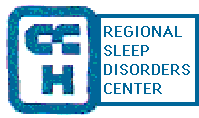SLEEP
CENTER STUDIES ARE VITAL IN MOST CASES--PARTICULARLY IN VIEW
OF THE EXTRAORDINARY PREVALENCE OF SLEEP
APNEA, AND THE FACT
THAT SLEEP APNEA CAN PROVE DANGEROUS IF NOT DIAGNOSED AND TREATED.
-In all cases, monitoring of overnight sleep (polysomnography)
is important: to look for a wide variety of possible factors that
could be making sleep ineffective. Sleep
stages, breathing, heart rhythm and leg movements are among the
most basic parameters routinely measured, and a number of additional
body functions should be evaluated concurrently if warranted.
-Particularly
if the individual's sleepiness has arisen not from disturbed
sleep, but instead, from abnormalities in brain mechanisms
responsible for maintaining alertness, an additional test (the
multiple sleep latency test or MSLT) is performed. It involves
monitoring of four or five brief nap sessions during the day following
an overnight polysomnogram: to determine how rapidly the patient
falls asleep, and to look for the inappropriate
occurrence of REM sleep in multiple naps (which can
suggest narcolepsy and
other causes).
Sleep center studies are safe to the point they can even be done
in small infants!--and the amount of valuable information that
they provide is often astounding. They frequently are the essential
keys to resolving serious problems of impaired alertness.
Click
here to contact us.

